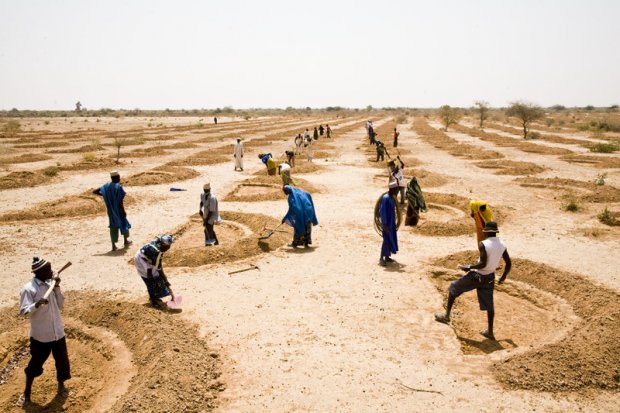En Algérie, il est crucial de récupérer les eaux de pluies et de favoriser leur infiltration. A travers cette page nous nous proposons d'exposer des techniques qui ont fait leur preuve à travers le monde. Ces techniques peuvent être développées au niveau du bassin versant, du champs ou du lit de semences.
Le problème: retenir cette eau pour ne pas qu'elle aille se perdre et s'évaporer dans les chotts ou se perdre dans la mer.
Nous pensons que ce sont aux autorités locales, mais également aux agriculteurs et populations rurales de prendre des initiatives pour la saiuvergarde d'un bien commun: l'eau et le sol.
Nous proposons différents liens dont ce livre en ligne: http://books.openedition.org/irdeditions/2863
Photo:Sétif.info
TECHNIQUES MECANISEES
Effective
Mechanized Rainwater Harvesting: Coping with climate change
implications in the Jordanian Badia
Le document qui suit est intéressant. Il montre comment, en Jordanie, avec une charrue et un appareil de lecture topographique on peut réaliser des pièges à eau de pluie selon les courbes de niveau et y planter de l'attriplex.
Photo:
Photo:
Photo:
Science IMPACTS Success
Stories
http://www.icarda.org/sites/default/files/u158/Science%20Impact%20Vallerani%20Badia_final.pdf
TECHNIQUES MANUELLES
 Photo: Réalisation de cuvettes en demi-lune.
Photo: Réalisation de cuvettes en demi-lune.Photo: cuvette en demi-lune dans une oliveraie. Eric Roose.
Photo: Seuil en pierres sèches pour lutter contre le ravinement.
Sources: http://www.ma.auf.org/erosion/chapitre1/VI.Lutte.html
ICARDA:
Water
Harvesting: bringing water to communities
Scaling-up:
This technology is suitable for both crop- and range-based production
systems with the necessary topographical and soil/substrate
conditions.
The
biggest challenge in dryland agriculture is low and erratic rainfall.
A new technology package is available that can help build effective,
low-cost systems for harvesting rainwater. This will deliver larger
and more stable water supplies for crops and livestock, even in very
dry areas.
This
technology has been tested in several countries including Syria,
Jordan and Libya – three of the world’s driest regions. It relies
on existing information – cadastral maps, supplemented with data on
soil, topography and other factors. Using GIS analysis, scientists
identify specific areas best suited for constructing water harvesting
systems.
This
method greatly reduces the time and cost of implementing water
harvesting systems.
In
Eritrea, ICARDA and its partners used a GIS model, adapted to
data-poor environments, to produce a ‘suitability map’ of the
Zoba Debub area, to assess the potential of different water
harvesting techniques. This analysis showed that water harvesting
potential in the project area (as in many dry areas worldwide) was
much higher than previously realized.
In
Jordan, a multi-component technology package (water harvesting plus
other innovations) has helped rehabilitate degraded rangeland areas,
reduce erosion, and improve the production of fodder for livestock.
Other
proven interventions include:
Mechanized construction of micro-catchment to harvest rainwater
Planting indigenous fodder shrubs around water catchment ponds
Effective water harvesting even from very low rainfall events
Soil
loss reduced by nearly 70%
Benefit-cost ratio up to 12:1



Cet article a été consulté plus de 134 fois.
RépondreSupprimer-Merci pour votre intérêt, nous ne manquerons pas de l'actualiser.
-Nous signalons à chacun que sur notre site "Agriculture Algérie Belaid Djamel", nous avons mis en ligne plusieurs brochures sur les techniques de récupération de l'eau de pluie.
LIEN:
ALGERIE : la gestion des crues en agriculture.
www.djamel-belaid.fr/app/download/.../BrochureGérerLesCruesEnvoi.pd...
Système d'obstacles permettant un épandage de crues (Algérie). Texte mis en forme ... Gérer les crues. Courriel : thomas.mourier@ird.fr URL : http://www.ird.fr.
-Ces brochures sont inspirées du livre de Mr MOURIER Thomas (IRD). Nous recommandons vivement la lecture des chapitres 5 et 6.